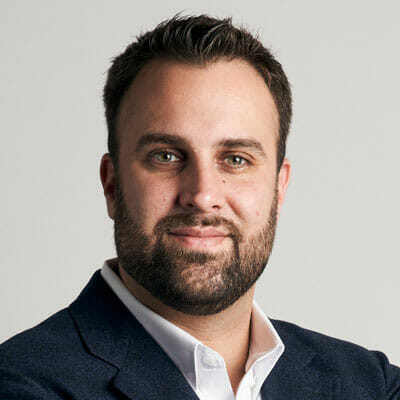Integrations and automation between systems are typically complicated, take weeks or months, and require software developers or engineers with solid coding skills. With Power Automate (formerly called Flow), Microsoft provides a central cloud-based platform that facilitates and speeds up integrations. Within a few hours, employees with basic technical understanding can integrate a CRM, ticketing system, or local address books, trigger internal actions, and automate business processes.
What is Power Automate and how does it work?
Power Automate is Microsoft’s low-code automation and integration platform. It allows admins and Team managers to create and automate processes and tasks throughout different applications without the help of developers or coding experts. Power Automate comes with a myriad of pre-built connectors. This includes the Microsoft application stack, such as Teams, SharePoint, Dynamics, or Power BI, but also other solutions like Salesforce, Freshdesk, ServiceNow, and Luware Nimbus. Instead of individually integrating these software tools, organizations can use the tools’ out-of-the-box connector to Power Automate and easily connect them. Power Automate serves as the central hub and acts as a hyper-flexible automation platform – it’s like a massive adapter for your IT landscape. “Power Automate is like a glue that sticks tools together in a new way,” says James Cadman, VP Customer Success at Luware, “Think of it as a framework that allows you to build novel integrations with logic in between.”
 Figure 1: Traditional software integrations without Power Automate (left) and integrations with Power Automate (right)
Figure 1: Traditional software integrations without Power Automate (left) and integrations with Power Automate (right)
Triggers and actions
Power Automate uses triggers and actions to build automated processes with the connected applications. Triggers can be a new contact or lead in the CRM, an updated ticket, a timer, or an incoming call. Actions define what happens if Power Automate is triggered. This can be to send a Teams notification, create a new ticket, add a new row with information to a spreadsheet, or find a specific record in the CRM. Power Automate can be used to collect and transmit data. The tool itself does not store any data but only acts as a hub that sends data and information between systems.
Use cases for Power Automate
There is an infinite number of scenarios that can be automated with Power Automate. Here are just a few use cases to give you an idea of how your organization could benefit from this tool.
- Integrate a CRM for service calls to ensure 360° customer view, automatically log calls, create contacts, or route to a specific service based.
- Automate incident management by sending IT specialists a message to report a problem or to record the incidents in a SharePoint list.
- Track what customers are saying about your product by collecting posts on Social Media mentioning your brand, copy them in a SQL database for sentiment mining.
- Manage lost calls by tracking them in a SharePoint list and notify the responsible employees via Teams.
- Integrate local address books to show caller information for service calls.
- Integrate your ticketing tool for the IT helpdesk to automatically open an existing ticket or create a new one when IT specialists receive a call.
- Feed multiple data sources, including staffing and contact center statistics, into Power BI to get comprehensive business insights with automated reports.
Understanding logic is sufficient
No coding skills are required to operate Power Automate. A graphic user interface visualizes the flows and only a basic technical understanding is needed to set up flows. “You need to understand logic. Therefore, ‘no-code’ might take it a bit far, but ‘low-code’ is accurate”, states James. Depending on the flow you are configuring some simple queries have to be set-up to configure the elements. Nevertheless, this certainly does not require a software developer or engineer and can be done by an IT specialist or skilled employee from the line of business. Watch our 5 min demo of how to integrate Salesforce into our Contact Center to see how simple integrations with Power Automate are.
Democratizing AI and automation
As automation and integrations are typically time-intensive and require coding experts who are scarce and expensive, these technologies are usually reserved for high-priority use cases. Small and midsize companies, as well as departments and use cases with a lower priority or visibility within enterprises often don't get to reap the benefits of these technologies. The simplicity of Power Automate democratizes modern technology for AI and automation and makes it accessible to anyone. As it is part of the Microsoft ecosystem, many organizations already have access to it through their investment in the Microsoft IT ecosystem. As the technologies and tools are constantly being developed by Microsoft, we can also expect great improvements in areas such as cognitive services, AI, automation, and more.
Speed to market
Integrations often take a lot of time and can slow down the rollout of an application. “Contact center projects are heavily reliant on integrations with CRMs and ticketing systems to enable a 360° customer view, which increases efficiency and the quality of the customer service. These integrations can take months to complete and consequently often tremendously slow down project rollouts,” explains David Fischer, CSO at Luware. With Power Automate, customers can now integrate their tools into a contact center within hours. This accelerates the time-to-market of a contact center solution at the initial rollout – and throughout customer service operations. Previously a system update (e.g. a new update in Teams or the CRM) meant that integrations had to be checked, tested, and potentially updated. With Power Automate, connectors remain stable, which increases system stability and increases flexibility.
Conclusion
- No coding required. Users with a basic logical understanding can independently set up flows.
- Integrations and automation are easily configured in a visual editor. Standard connectors to many Microsoft and third-party applications are available.
- The set-up is fast – what used to take weeks or months can now be done within hours. This accelerates project rollouts, such as introducing a new contact center solution.
- Power Automate reduces busywork and increases the degree of automation, thereby giving employees more time to deliver real value.
- The investment in the Microsoft ecosystem can be leveraged.
- Automation becomes viable for organizations of all sizes and all departments.








